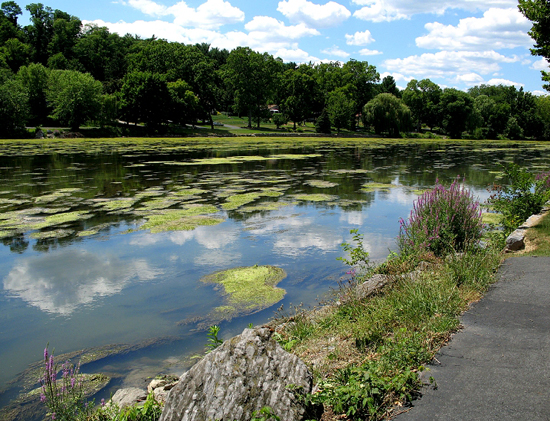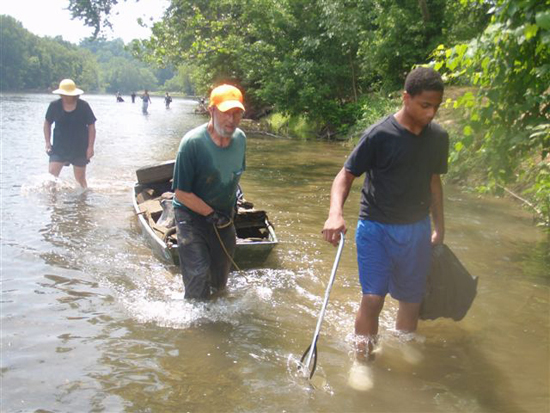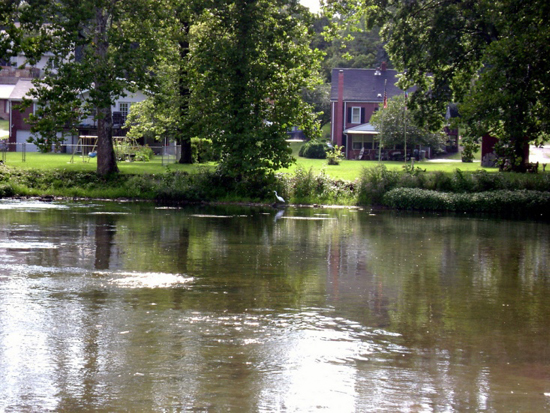Watershed Wednesday: Conodoguinet Creek W.A. (Pa.)
CCWA volunteers work with school groups, residents and local governments to remove trash and invasive plants.
If you think “Conodoguinet” is difficult to pronounce, try “Guiniipduckhanet.” That’s the name Native Americans used for this 90-mile-long tributary of the Susquehanna River. The creek’s 524-square-mile watershed in Cumberland County, Pennsylvania, was home to Native Americans as early as 1,000 B.C. These early inhabitants depended on the creek’s freshwater mussels and fish.

(Image courtesy Steve Cavrich/Flickr)
Today, residents of the area may not associate their dinner plans with casting a line in the Conodoguinet, but the creek’s natural resources are nevertheless vital to a healthy community and functioning ecosystem.
To preserve the history of the creek, enhance its fishing potential and protect its unique geological formations, a group of local citizens formed the Conodoguinet Creek Watershed Association (CCWA). CCWA volunteers work with school groups, streamside residents, local governments and non-profits to clean up the creek and remove invasive plants.
The Conodoguinet Creek Watershed Association offers a number of volunteer opportunities, including:
- Mapping invasive plants: Invasive plants spread aggressively, out-competing the native vegetation that wildlife need to survive. If you’re out exploring this spring and happen to come across Japanese knotweed, make sure to call CCWA and let them know where you found it.
- Summer creek clean-ups: CCWA holds a “creek sweep” each month in summer. During the most recent clean-up, volunteers removed two tons of trash! CCWA is currently looking for a boat to assist in its clean-ups next season.
- Monitoring the water: Volunteers keep track of water quality by measuring the amounts of nitrogen and phosphorus in the creek. Monitoring water quality is one of the first steps in figuring out how to improve it. CCWA is always looking for volunteers to help monitor the Conodoguinet.

(Image courtesy Conodoguinet Creek Watershed Association)
Another part of CCWA’s mission is to promote and preserve the recreational quality of Conodoguinet Creek and its connecting streams. If you live in the area, get outside and enjoy all the creek has to offer with one of these great recreational opportunities:
- Get out on the water: Conodoguinet Creek flows through at least six parks and a handful of natural areas. Boaters, rafters and floaters can download this interpretative guide and map from the Cumberland County Planning Commission to learn more about the creek’s water trails.
- Catch ‘em and eat ‘em: A traditional German carp recipe is rumored to please. You can use nearly anything – worms, corn, even dough – to catch these tasty fish.
- Calling all history geeks: A detailed account of the Conodoguinet Creek watershed’s geology and history provides the context for CCWA’s cleanups and restoration work.

(Image courtesy Jason Trommetter/Flickr)
For more information about the association and Conodoguinet Creek, visit CCWA’s website.

Comments
There are no comments.
Thank you!
Your comment has been received. Before it can be published, the comment will be reviewed by our team to ensure it adheres with our rules of engagement.
Back to recent stories